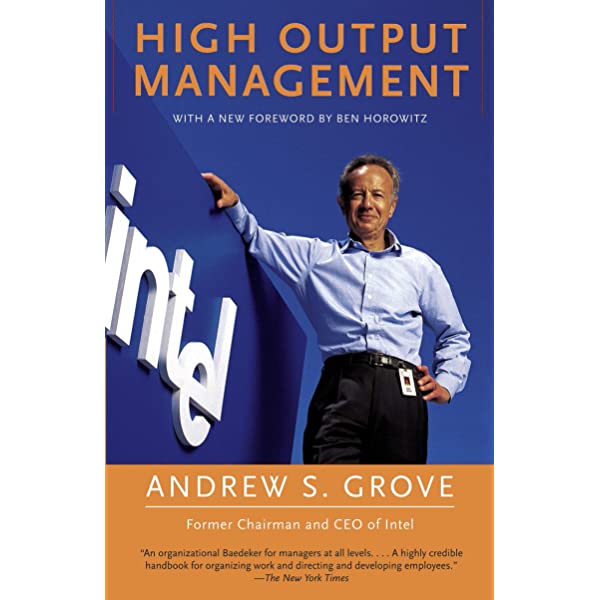High Output Management de Andrew S Grove, former chairman and CEO of Intel, describes how to build and lead successful companies and teams from a management and leadership perspective.
Although the book was published in 1983, it is an all-time classic. It ages well and can be reread without feeling outdated.
In short, the book applies traditional production principles to management and leadership. These principles are still current due to the rise of agile methodologies that have been widely applied in the business world. It is relevant to appreciate the pragmatism with which Andrew S. Grove describes complex concepts such as how to organize time to optimize high-leverage activities or motivate subordinates.
On occasion the book might seem too simplistic at times. Reducing complex organizations to production principles (for example, thinking only from the perspective of inputs, inventory, forecast planning, etc.) can work well for results-focused organizations, but companies include other more flexible areas (for example, management). of risks, innovation management or prioritization, among others).
Still, it's a fascinating timeless read on management and remains relevant regardless.
Summary
- Elements of high performance management:
- Results-oriented approach: apply manufacturing principles to the work of managers.
- Organizational work is not an individual effort but a team effort; therefore, the result of a manager is the result of the units under his influence.
- A team will perform optimally as long as the people on the team can.
Results-oriented approach
The book models management activities from the perspective of manufacturing and process management. understanding the production items (inputs, products, inventory, labor, quality controls) and the metrics development to control them as key elements to manage them effectively. You must also be aware of each limiting aspect in the production process.
Another important concept is the fact that the material becomes more valuable as it progresses through the production process. Therefore, it is the responsibility of a manager resolve blocking issues or incidents in the lower value production stage.
Manager
Productivity is defined in the book as output (product or quantity of products, for example) divided by the work required to produce that product. Therefore, managers must focus on high leverage activities, that is, those that produce the greatest results for each unit of input.
To do that, a manager has limited time to spend on non-critical issues and must focus on:
- Gathering of information: casual verbal exchanges, reading of reports, visits to factories or particular teams, etc.
- Decision making: provide input or opinion on hard facts, debate pros/cons, review decisions made by others, ratify/veto, etc.
- Push others: move someone or make an effort in a specific direction
The production of a manager is the production of his organization together with the production of the organizational teams in contact under his influence.
Most management activities are carried out through meetings. There are two types of meetings:
- Process-oriented meetings: exchange of knowledge and information on a recurring basis:
- One-on-one meetings
- Staff/team meeting
- operational reviews
- Mission Oriented Meetings: Ad-hoc meetings scheduled to make a decision on a particular issue.
Planning
- Step 1 – Establish the need or projected demand: What will the environment demand of the manager, the company or the organization?
- Step 2 – Establish the current state: What is happening now? What will occur as the manager's projects in the development stage are completed?
- Step 3 – Compare and reconcile steps 1 and 2: What more (or less) needs to be done to produce what the environment will demand?
This section sounds very similar to the OKR, a framework that has been adopted in many companies. Companies set the Objectives high level and design Key Results intermediate stops for deliveries and move toward them.
Improving team performance
The last past of the book focuses on the role of managers as "managers of people." Some concepts:
- A manager needs to establish clear expectations and cultural values.
- In order to increase the people and motivation, a manager must understand the needs of the individual (ie, expanding competence or achievement) and the preferred way to measure it, either in absolute or relative terms (ie, compared to others).
- Depending on the capacities and functions of the employee for the development of a task, orn manager participates in obtaining the results of that person or in a more task-oriented management style.
- Once expectations are set, performance is evaluated looking at the impact on
- 1) the organization in general
- 2) the personal impact on the result.
- According to the promotion, we must take into account the peter's principle, which is to promote someone until that person reaches their level of incompetence at a given level; do not promote excessively or in advance.
- When a team member leaves, it is manager's fault as it is likely related to unmanaged expectations on both sides.




